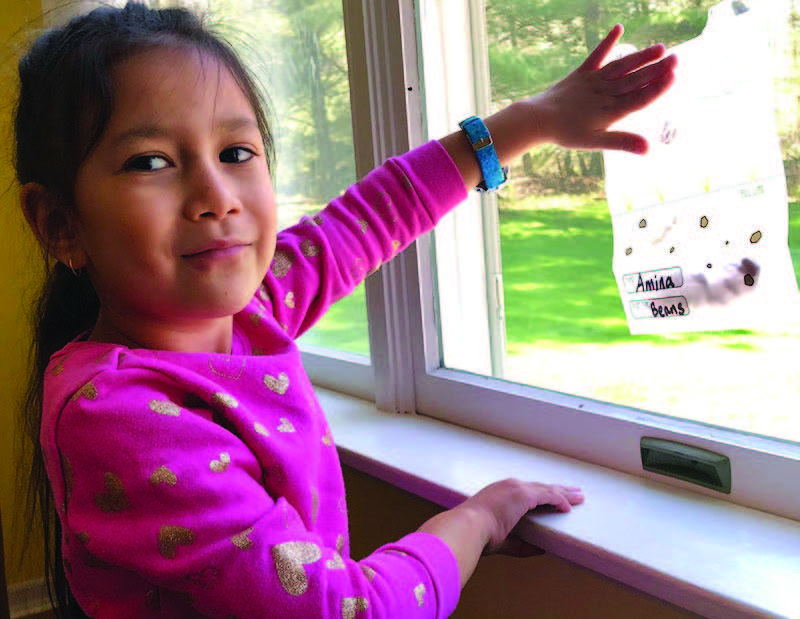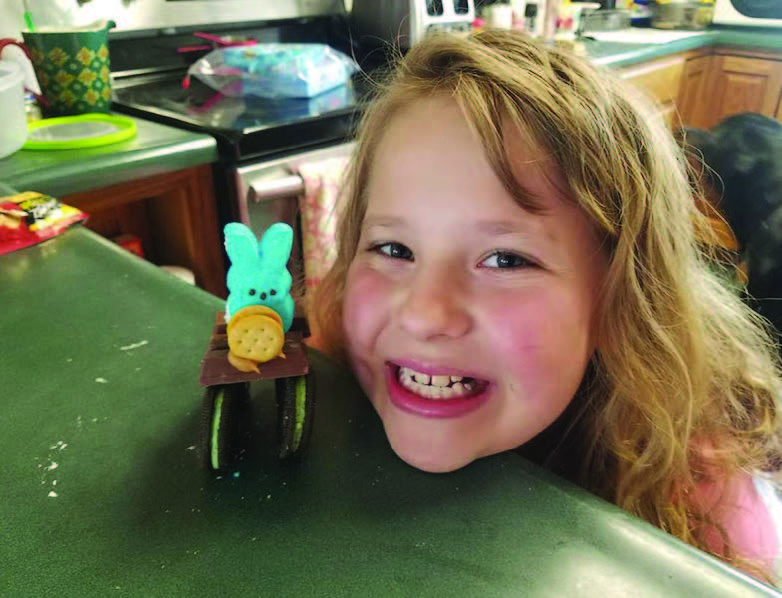
Even though students aren’t physically together in their classrooms because of the COVID-19 pandemic, they are still being challenged to use creativity and critical thinking skills. At the beginning of the 2019- 20 academic year, the Diocese of Scranton Catholic School System launched its new STREAM (Science, Technology, Religion, Engineering, Arts and Math) learning initiative, and even the coronavirus cannot stop students and teachers from continuing to use it.
“They’ve embraced it and I think it helps us all stay connected when we’re so separate,” Sara Kitts, computer teacher and librarian at Epiphany School in Sayre, said. In her Bradford County elementary school, Kitts has been sending a weekly blog to families with materials and resources for distance learning. Part of the blog contains a daily Facebook challenge which includes STREAM activities focused on connection, creativity, critical thinking skills and communication. “We have done several different STREAM challenges,” Kitts said.
“One of them asked students to build a car. That was an engineering challenge with whatever materials they have on hand. We asked the kids to design a car and post a picture of their creation to our Facebook page with their parents help. We got quite a few different options. We had some do Legos, some made it out of cardboard. We had a young lady in second grade do it out of Easter candy and cookies which I thought was quite creative.” Epiphany School keeps its STREAM Facebook challenges broad to make sure all students, Pre-K through sixth grade, can participate.

“In an Easter art challenge, there was quite a lot of watercolors showing Jesus on the Cross that the kids made with their families, which I thought was a nice connection between the art and religion of STREAM and of course the technology piece of sharing their creations through social media,” Kitts added. The basic concepts of STREAM learning are that it is student-centered and cross-curricular. It focuses on hands-on projects that connect the six disciplines (Science, Technology, Religion, Engineering, Arts and Math), encouraging students to work collaboratively and communicate effectively.
“Everybody is being very flexible and open-minded and allowing the students to learn in the ways that they can learn in their own environment,” Kitts added. Ongoing STREAM lessons are taking place at all of the Diocese of Scranton’s Catholic Schools. In Williamsport, Saint John Neumann Regional Academy Principal, Alisia McNamee, said elementary school students are working on a special project at this time. Families have been asked to submit videos of their students singing God Bless America to be accompanied by patriotic artwork.
“Rich Cummings is then going to string all of it together to create a video (virtual chorus) of all of the students singing together. This project was born out of the plans that were already in place for our spring concert,” McNamee said. They hope to have the virtual chorus project finished by early June. Ann D’Arienzo, principal of Our Lady of Peace School in Clarks Green, said STREAM learning has also continued for her students because it was a commitment the school made to families at the beginning of the year.
“Our teachers have gotten very creative by researching and using digital apps as well as having the kids think critically about ways that they can meet a challenge,” D’Arienzo said. At Our Lady of Peace School, educators are very deliberate in the assignments they prepare for students while they are out of the classroom. “What we want to avoid during this remote learning is students just doing written assignments and submitting them for a grade. We want them to be able to do hands-on, project-based learning. We want them to continue that,” D’Arienzo said. For example, Pre-K students, who are just four and five years old, recently completed a STREAM project that helped explain how bean plants grow. With the help of their families, the kids used beans, wet paper towels and plastic bags to help them observe the growing process. No matter the grade level, students at Our Lady of Peace School are still taking part in STREAM learning. First grade students were tasked to create something useful out of recycled plastic grocery bags, second and third grade students took part in an ecosystem scavenger hunt and sixth grade reading students created their own movie trailers as a digital STREAM project in conjunction with a reading lesson.
“I think our kids, especially as they’re getting older, are becoming more resourceful and are brainstorming with each other,” D’Arienzo said. D’Arienzo even believes this pandemic has a silver lining. “I firmly believe this is making us better teachers and better educators,” D’Arienzo said.
“We’re doing things that we would not be doing otherwise. Teachers are experimenting, researching, figuring out different platforms and ways to deliver instruction that they wouldn’t have had to think about in their normal routine.” Because embracing technology is an essential aspect of STREAM, educators expect to keep using many of the things they have learned during this pandemic well after it is over.
“When we go back to physical school, we’re going to continue moving forward with these technological platforms even though we’ll be in school. This is something that we’re going to move forward with and continue to grow,” D’Arienzo added. Amina Hazzouri, a Pre-K student at Our Lady of Peace School in Clarks Green, watches her beans after completing a class STREAM project. Arabella Robbins, a second grade student at Epiphany School in Sayre, shows off her creation for the school’s ‘Build a Car’ STREAM challenge. Christopher Jordan, a first grade student at Our Lady of Peace School in Clarks Green, used action figures to complete a ‘Jumping Into Measurement’ STREAM activity regarding non-standard units of measurement.
